Defining Hinduism
Part One
The current state of the world displays the ‘binary system’ (see Theme 9) with societies the world over in confusion, struggling to define their ideologies, their core values and purpose. India is engaged in that struggle as well, and as presented in Theme One of this Website, the burden of her struggle is greater than other nations. During this 9th Manifestation of the Earth there is one place on the planet that holds as the ‘centre’ during the shift from Eurocentrism to Indocentrism. India is that ‘Centre’ for the planet during the dismantling of the ‘old earth’ and its evolution from the mental to the Supramental consciousness.
There is difficulty in describing Hinduism, and Thea calls it ‘an exercise long overdue’. Those who call it a ‘theocracy’ reveal a great misunderstanding, as it does not follow patterns that other religions follow. It cannot be labelled ‘religious’. She acknowledges there is no term in which to fit this ‘unique manifestation of the human spirit, and that its principle features ‘have become quite obscured over the centuries’, so much so that to find an authority is difficult. Sri Aurobindo stands alone. His revelations, which reach back to the true Vedic foundation, give a definition of Hinduism, but many fail to appreciate or comprehend his full meaning (Thea, Establishment of the Vedic Dharma and Contemporary Indian Society, The Vishaal Newsletter, 7/1).
Thea goes to the Hymns to Skambha of the Atharvaveda to help the student understand the nation’s struggle, and her destiny:

‘…Toward whom does the rising Flame aspire?
Toward whom does the Wind eagerly blow?
On Whom do all the compass points converge?
Tell me of that Support (Skambha) – who may he be?
Where do the half-months and months together
Proceed in consultation with the year?
Where do the seasons go, in group or singly?
Tell me of that support – who may he be?
Toward whom run the sisters, day and night,
Who look so different yet one summons answer?
Toward whom do the waters with longing flow?
Tell me of that Support – who may he be?
(translation, Raimundo Panikkar)
There are many more verses to this Hymn, but even these first few demonstrate the early Vedic spiritual realisation, their alignment toward the ‘Mysterious One – the Axis Mundi.’ The Divine Architect, Vishwakarma, fashioned the nation and her people to his image and they made the choice to live for that ‘Support’ alone (Skambha, image above).
About the Vedic civlisation, Thea wrote: (it) is the only one in the world, from ancient times into the present which has been audacious enough to strive to establish an entire society on this profound basis, ‘this support’ (ibid).
The knowledge contained in these hymns has been lost and now resurfaces again in this 9th Manifestation with the appearance of the 9th Evolutionary Avatar, Sri Aurobindo, whose coming is to re- establish or restructure Indian society on those same eternal and indestructible foundations (ibid).

There are new problems arising in the world which have accumulated since the beginning of this 9th Cycle of Time , the Age of Pisces, 234 BCE (see Map of the 12 Manifestations, Theme One and Nine). Thea writes that the rise of the Buddhist and Mayavadist systems ‘ struck a blow at the very heart of the Veda itself – that Core of Fulness upon which the entire edifice of the civilisation was built.’ (ibid). These other-worldly philosophies deny the Earth herself by the very fact that their goal is ‘heaven’ and this planet is only a springboard to reach that ‘beyond’ after life on this Earth.
And over time, in the evolution of Hindu society, it became impossible to locate the periods of Vishnu and determine the exact appearance of his Avatars; this allowed the insertion of Gautam the Buddha into the ‘Line of Ten’.
Thea writes it is safe to assume that around 396 AD, with the loss of the Eleusinian mysteries in praise of the Divine Mother and her daughter, Kore, the foundations of Hinduism were so weakened that the insertion of this ‘false avatar’ became possible.
Having lost the connection to the Cosmic Pillar/ Skambha, as described in those glorious hymns, lndia lost its ‘binding energy’, and her calendar became frozen in time. The result is that the next appearance of Vishnu is ‘not expected to dawn until the 4th millennia of our era’ (Thea, Cosmic Harmonies in Hindu Civilisation, The Vishaal Newsletter, Volume 5, no. 6). However, the Vedic Dharma that harbours that ‘Support’ cannot be stopped – and the mission of the true 9th Avatar began in the early part of the 20th century. His yoga, along with that of his ‘Solar Line’ (see Theme 2) was to set on its way the process of ‘correcting the error of the Buddha’.
Sri Ram and Sri Krishna lived the yoga, kept that ‘axis’, that Divine Support, alive for thousands of years, before the coming of Sri Aurobindo. Unlike Buddha, both were emanations of Vishnu, following the Hindu tradition of the Ten Avatars. The work of this 9th Avatar is not to re-establish the reign of Sri Ram of 10,000 years ago, time moves on.
The Ayodhya issue was a rallying point, awakening dormant energies, and it helped to focus attention on an aspect of Hinduism that is very important. The Line of Ten evolutionary avatars means a march forward in time, thus Sri Aurobindo called it a ‘parable of evolution’. It is the structure that allows for renewal and updating.
Although India’s destiny is ‘spiritually oriented’, as stated, it is not a religion, i.e., it continually renews and updates itself. And so, Hinduism can be the ‘vahana’ or carrier for the earth’s soul. Thea writes:
‘Hinduism is one of the rare expressions on Earth of a progressively unfolding cosmic Truth…because its soul is that very Cosmic truth, it is one with the deepest purpose of the planetary evolution. Hinduism can therefore be identified as the vahana (vehicle) of the earth’s own soul, a truth exquisitely conveyed in the ancient Vedic symbol of the white steed, Agni, carrying Usha, the Divine Dawn across the horizon of the Earth’s awakening cosmic day.’(ibid).

Therefore all the many concerns that people have today, such as secularism, minorityism, majorityism, democracy, communalism, fundamentalism, or national integration, caste and all the rest, are not relevant to the real issue facing India (ibid). She has one choice only – past or present, the new or the old. And as has been true throughout the Ages, the evolutionary Avatar is the nation’s backbone, the key to re-establishing the Dharma.
We have reached the end of the line, the 9th and 10th stages of the Puranic Line of Ten. This is the time to live the real Age of Truth that we are in at the present time – the Satyayuga. The key feature of this Age is Gnosis, or Knowledge; ‘it is no longer a reign of ignorance, falsehood, and half-light…Kalki is the symbol of the victorious Birth. The ‘ruse of the Supreme’ clouded this cosmic process in veils – protecting it as a foetus is protected by the maternal sac…’. The veils themselves must now be dissolved. (ibid)
Part Two
The Avatar of this 9th Manifestation (and his Solar Line) faces a very different task from that of Sri Krishna, some 6000 years ago, or Sri Ram, 12,000 years into the past; a phenomenon unknown in the ancient world, ‘the rise and establishment of organized, orthodox religions’. The Dharma did indeed survive this foreign element, Thea writes: ‘the Mythic/epic character of the civilization persisted… Deep in the consciousness of the inhabitants of the subcontinent the true knowledge has been ”stored”.’ (Thea, Establishment of the Vedic Dharma and Contemporary Indian Society, Culture and Cosmos volume 7, no. 2)
And naturally, there is a desire to re-establish the Vedic Dharma, to release that psychic consciousness waiting to ‘approach the Supreme Truth’ once again. Thea wrotes these words in June of 1992, the events of Ayodhya had yet to unfold, but there was a certain excitement in the air, a perceived shift toward ‘Hindutva’ in the nation. Understandably the topic created a panic among the ‘western-oriented intelligensia’, she acknowledged; it is perceived as a return to an age of darkness, or to a ‘fundamentalism’ of a pre-enlightenment period.
She felt that the real meaning – ‘to re-establish the Dharma’ – was getting lost in the emotionally charged atmosphere, and set out to reaffirm some basic ideas. To return to the roots of Hinduism, the first prerequisite is to understand that ‘the continued survival of Bharat as a civilisation’ is at stake. In order to survive over the ages, and to accommodate the many compromises that had to be made with the ‘falsehoods’ that were introduced along the way, many of the ‘supports’ of the nation had been weakened by ‘accumulated distortions’.
Thea makes it clear that the need of the day is not a return to the Manu Smriti, or any other Scripture; it is not a question of ‘eschewing foreign culture’ in favor of indigenous expressions of art. Nor is it banning of cow slaughter or the rigid espousal of the caste system. Any of these may accompany the re-establishment of the Dharma, she explains. But they are not the essential.
Something else is needed: ‘the correction of the nation’s time-axis in order to realign it with that of the ancient Vedic Age’. (ibid). And this has to do with the Calendar. Thea takes the discourse into a wider framework at this point citing that the Calendar was used in the ancient civilization by the State. It was used, without imposition, ‘to create order and maintain diversity of expression under one umbrella’. It provided a system of time by which ‘that greater Harmony could be lived on Earth collectively, and serve to unify the diversity which necessarily characterizes any collectivity.’(ibid)
With the discovery of Uranus in 1781, followed by the Neptune in 1846 and Pluto in 1930, an element entered the atmosphere of our Earth which gradually corroded the hold that religions held over society. In many ways, this expansion of our Solar System affected the Indian civilization, but unfortunately it did not affect its’ method of time-reckoning’, which had been lost in the earlier part of the 9th Manifestation.
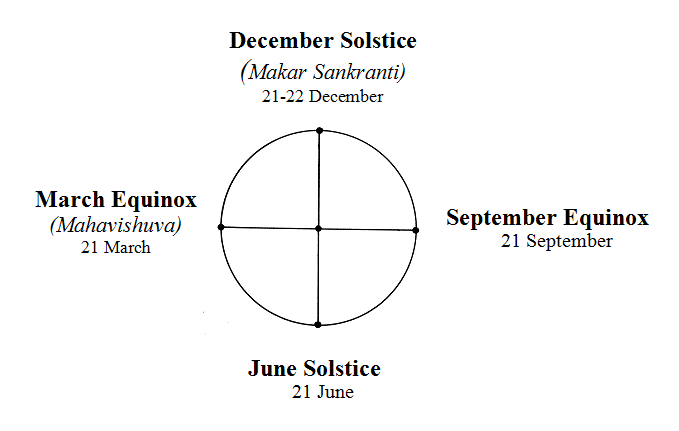
To bring into harmony the entire society and devise a calendar acceptable to all communities is obviously a complex if not impossible problem. However soon after Independence in 1947, the Government of India realized that if it wanted to be relevant in a global society it had to regulate its affairs on the basis of the Gregorian calendar.
The official Saka calendar was based on that model; but it satisfied no community. Thea concludes the problem cannot be solved if it remains in the domain of religion; hence she asks several questions:
‘Does a method exist to systematize the flow of time and the cosmic process which rises above these sectarian preferences and encompasses a more universal concept, one that can be accepted by all sections of the society? and ‘What is the principle which must govern such an undertaking ? (ibid)
Thea deals with the second question first, because without this understanding the nation cannot clear up the confusion and get to the root of the problem. It is imperative to realise what was lost in India and how the decline set in. She turns to the Hymns to Skambha, in the Atharvaveda once again (see part One of this Theme) to show that up until the Age in which these sublime verses were written, ‘Skambha was the object of the spiritual endeavor and not the Beyond, or the non Being’.
She cites this verse to show that the national consciousness was held together by this Point, or Pillar (Skambha), and from this ‘seed’ the cosmic manifestation came into being: ‘Men recognize the Golden Embroyo (Hiranyagarbha) as the unutterable, the Supreme. Yet it was the Support (Skambha) who in the beginning poured forth upon the world that stream of gold…’. (ibid).
It is understood in these verses that Skambha (or the Support, the Point) is Agni, ‘the divine Will working in the world’:
‘Vedic Agni is the divine particle in the human being which holds his or her consciousness together and centred on this divine element rather than the dark ‘sun’ of the ego. The objective of the Vedic Yoga is the shift from a binary to a unitary creation. The means by which to achieve this end is through realization of that Point, that perfect centre, that Skambha or pillar upholding the world and the axis around which the human consciousness itself is structured. In the apt aphorism, ‘As above, so below”.’ (ibid)

For Thea it is clear: ‘the measure was lost when the spiritual endeavor veered BEYOND the cosmic manifestation and that beyond then became the focus of the quest.’(ibid). She calls this shift to the ‘beyond’, to ‘otherworldliness’, ‘the great undermining’ which over time attacked the collective Will of the Nation. Wisemen lost sight of the meaning of ‘skambha’ or ‘the Pillar/Point’ – which is ‘the soul/axis ‘ located in the individual, and the civilization, and in the very geography of the country.
No other civilization or belief system can demonstrate this so clearly. It does not rely on a prophet, a founder, a saint, or a book; it relies solely on the Cosmic Harmony which is an eternal scripture, continually evolving and expanding.
There are certain principles or Laws which are unchanging, i.e., the Dharma is ‘the single most important element in Hinduism’ (ibid). And it is on this Principle or Law the entire material creation is founded – the evolution of the Cosmos began with this Point, this soul axis: ‘The One on whom the Lord of Life (Prajapati) leant for support when he propped up the world – tell me of that Support (Skambha) – who may he be?
Part Three
Sri Aurobindo responded to the criticism of William Archer on Indian culture in his newletter, ARYA. From February 1919 through January 1921 a series of articles under the heading, ‘A Defense of Indian Culture’ appeared. The following quote on ‘What is Hinduism’ is taken from an article titled, ‘Indian Spirituality and Life – 1’
‘And if we are asked, “but after all what is Hinduism, what does it teach, what does it practice, what are its common factors?” we can answer that Indian religion is founded upon three basic ideas or rather three fundamentals of a highest and widest spiritual experience. First, comes the idea of the One existence of the Veda to whom sages give different names, the one without a second of the Upanishads who is all that is and beyond all that is….in a word, the Eternal the Infinite. This is the first and common foundation…’
‘Admit in whatever formula this foundation, follow this great spiritual aim by one of the thousand paths recognized in India or even any new path which branches off from them and you are at the core of the religion. For its second basic idea is the manifold way of man’s approach to the Eternal and Infinite…the One Godhead manifests himself in the form of his qualities in various names and godheads…’
‘The third idea of strongest consequence at the base of India religion is the most dynamic for the inner spiritual life. It is that while the Supreme or the Divine can be approached through a universal consciousness and by piercing through all inner and outer Nature, That or He can be met by each individual soul in itself, in its own spiritual part, because there is something in it that is intimately one or at least intimately related with the one divine Existence’.
The essence of Indian religion is to aim at so growing and so living that we can grow out of the Ignorance which veils this self-knowledge from our mind and life and become aware of the Divinity within us. These three things put together are the whole of Hindu religion, its essential sense, and, if any credo is needed, its credo.’ (Sri Aurobindo Ashram, The Renaissance in India, 1997)
Part Four
Summary: India’s Unity in diversity
‘Today we stand at the threshold of a new world, one that moves away not only from Religion but from her reactionary partner Science as well. Humanity is impelled to seek a new method, apart from both these factions.’ (‘Unity and Diversity – Finding Roots in the Present’ in Time and Imperishability, Aeon Books, 1997, p 150).

Although written in the last decades of the last century, Thea’s words have never resounded more relevant and true. it is tempting to plunge into the known and the secure, she continues, to search for the ’original light’, be this of any of the world’s great religious traditions, in hopes of re-establishing them in their ‘pristine purity’ once again. But, this can only fail.
And the technological machine of Science, without a moral compass, is only crushing the world under its ‘ill-illumined’ mass. There is a ‘third way’, she writes, that extracts from the past what is essential and true and merges it into a new structure which gives a secure foundation for the journey ahead.
This ‘new way’ is destined to be first concentrated in one place on this Earth, in India, because all the ‘ingredients for this experiment’, as Thea calls it, are found in super-abundance in this nation. India is the only country on Earth today that offers both ‘an unbroken line of civilisation from the distant, prehistoric past to the present’ (ibid, p. 151), and one that has kept that link with the ancient tradition.
The Vedas were composed by a collectivity of’ illuminated beings’, and even throughout the long period of Vedic decline their core of thought never ceased. The nation was forged in such a way that new trends could find their place and live on in their own niche. In this ‘national, ageless soul, we find in India today, all the various stages that mankind has lived. Thea elaborates:
‘A synthesising vision of its present state can therefore show us clearly the course of future earthly evolution, because these numerous densified strata, taken singly, indicate a facet of the Earth, a temperament of some individual element that must be integrated into a diversified unity embracing the entire planet.
When India finds the solution to her own diversity, when she is able to harmonise all these living and vibrant age-old facets of her national soul that exist in the country today, the way will be opened for a unification in consciousness, covering the entire planet, a process which does not eliminate or suppress the individualized points but rather gathers them up into an all-embracing unity where the points will find their place in the total circle of the one-Earth consciousness.
For it is an evident fact that the evolution of consciousness cannot stop at its present level…’’ (ibid p. 152).
The problem today is the many ‘independent points in the Earth circle’ without a central integrating power. The growing nationalistic movements are becoming negative, the harsh barriers erected between nations is causing each to live in isolation from the other.
In a future world of true unity, India is to be this ‘integrating power’; each nation is to realise its own soul and develop according to its own inherent dictates without interference from ‘elements foreign to its inner being’. Thea states that India’s myths reveal that the nation has both the readiness and maturity for this task:
‘…none on earth have understood as India’s wisemen have that the Absolute does not consist only of the Light but rather that it is the upholding power behind the play of both Dark and Light, – a power of harmony, of integration, of all-encompassing oneness. In this play the so-called light and dark elements find their place’ (ibid p. 155).
In the Churning of the Milky Ocean Myth for example, (Theme Nine), both the Gods and the Asuras are essential to the tugging. The ‘asuric’ or Dark forces function somewhat like a ‘container’, as they consume the poisonous fumes released by the Serpent Vasuki in the long and arduous churning process. The ‘darkness’ seems to be on the rise today, and naturally there is concern; but Thea cautions that these forces who ‘serve to contain’ the power – the ‘hoarders’ – cannot be eliminated. Rather they must find their place, they must be transformed (ibid p. 155).
Thea explains this process of transformation or ‘harmonisation’ by directing the student to the story of the Rig Veda. The central theme of these verses describes how the enemies of the Light capture and ‘pen’ the herds of cows into a cave. (in Sanskrit the word ‘go’ can be cow or ray of light). The cave is the ‘symbol of crystallised matter’ or our material creation, ‘and from this cave the cows must be released and the immortal victory secured’. (ibid)
The goal of the ‘enemies of the Light’ was to hide the cows deep in the hillside caves; similarly today the same enemies try to ‘cover’ or obscure the vision so we can no longer find those hidden cows, i.e., see the Light hidden in material creation. But the Gods did persevere; they led the journey forward and in the course of their ‘yearly sacrifice’ – the 10th month of the year, to be exact – they were successful in finding and releasing the cows (the Light).
In the Rig Vedic myth, Thea concludes, ‘we have the description of the Earth’s own yoga’, for therein we find the history of eternal Being in a process of Infinite Becoming…
(We have the description of) her journey through the dark labyrinthine recesses of material creation in search of her soul, for the purpose of offering the nation an insight into her true destiny in times of deepest darkness like our own…’ (ibid, p. 159)
It is the story of the cycles of time – Creation, Preservation and Destruction; Bharatmata looking into the Abyss, on the brink of not only her own collapse, but the destruction of the entire human species. But the myth does not stop at the Abyss, Thea emphasises; rather the verses carry the reader onward to describe how and when the victory is to be achieved (see End Note). This journey, these cycles are captured in the graphic discovered by Thea, which she states is, ‘an entire body of lost knowledge’. (India’s Diversity in Unity – a Testimony from Antiquity, Time and Imperishability, 2020, Aeon Books, 1997, p. 132).

Although no one knows the exact time or place of origin of the 12 zodiacal signs, the tenth sign, Capricorn, is known traditionally as the ‘ruler of India’. Thea explains that in the Rig Vedic legend, the sage knew – his eyes were not clouded or obscured by ignorance – that in the tenth sign or in the tenth month, of the celestial wheel of time, the kingdom of Truth (Swar) would be attained. He knew that the land wherein the establishment of the eternal wisdom is to be entrusted is India, ‘ruled’ by the 10th zodiacal sign, Capricorn, BharatMata (the ‘body of the Divine Mother’).
Our ancient Fathers had a deep and living connection to our Earth – a sense of oneness and unity that is missing today. They lived and used a lost branch of knowledge, the Laws of Equivalence and Correspondence, one such, ‘As Above, so Below’. And so, they had no problem in experiencing that the soul within each individual person is the same soul as the planet, as the Solar System, and beyond (ibid, p. 133). And likewise, India, as the Soul-nation of the Earth contains the ‘whole’ Earth.
Thea concludes that just as India must have played a central role in the past, we can be assured that in the future she will continue to do so. There is no rejection of the past achievements, liberties won, or knowledge achieved; we build on all the advances which have been so hard to achieve. But a re-discovery of only our roots will not help our unhappy and unsettled twenty first century. It is essential to see also what our future holds, for as Thea writes, ‘a new way exists which answers all our needs’. (ibid p. 161).
End Note 1:
Regarding the victory in the 10th month, Thea refers to Sri Aurobindo’s translation, found in The Secret of the Veda, Volume 15, CWSA, ‘The Seven-Headed Thought, Swar and the Dashagwas’:
‘in other words it is when the nine-months sacrifice is prolonged through the tenth, it is when the Navagwas become the ten Dashagwas by the seven headed thought of Ayasya, the tenth Rishi, that the Sun is found and the luminous world of Swar in which we possess the truth of the one universal Deva, is disclosed and conquered. This conquest of Swar is the aim of the sacrifice and the great work accomplished by the Angiras Rishis.’ P. 177
Comments
Related Books: Defining Hinduism
-
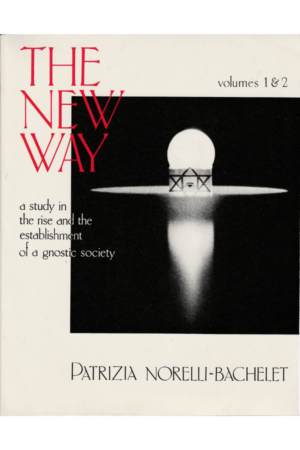
The New Way Volumes 1 & 2
₹900.00 Add to cart -
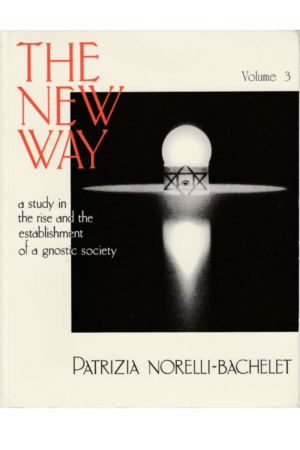
The New Way Volume 3
₹750.00 Add to cart -

Time and Imperishability – Essays on the Capricorn Hieroglyph
₹270.00 Add to cart -
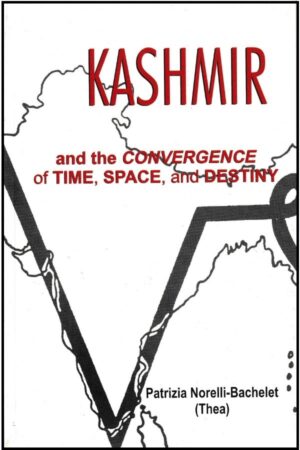
KASHMIR and the CONVERGENCE of TIME, SPACE, and DESTINY
₹210.00 Add to cart -
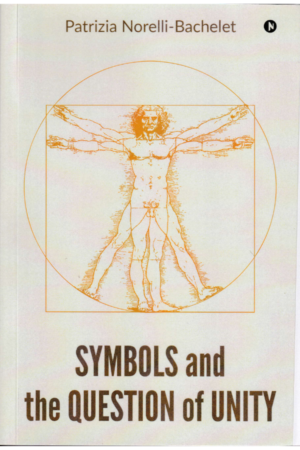
Symbols and the Question of Unity
₹350.00 Add to cart -
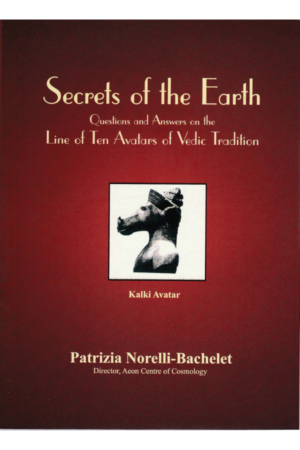
Secrets of the Earth
₹270.00 Add to cart
References: Defining Hinduism
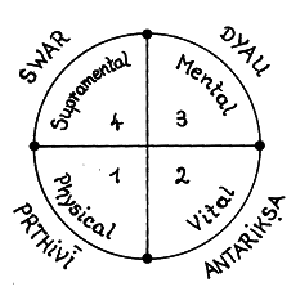
Establishment of the Vedic Dharma and Contemporary Indian Society, Culture and Cosmos, , volume 7, No 1, April 1992.
‘… we find that axial alignment, or indeed the coming into being of an axis in the first place, is the principal feature of the cosmic manifestation. This is to be verified in smaller cosmic bodies such as the planets, and in larger, i.e., the Sun. It is also the distinguishing feature of the very centre of our galaxy and indeed the supreme centre of all galaxies, in fact, wherever we find bodies in orbit of a central mass. This is simply because Skambha, that One, is the great secret of creation, the centremost principle of all that exists. It is, in fact, because of that centre, that Point, that any alignment came into being at all. Material creation begins with the Point which in turn is simply a crossing of cosmic directions. More specifically, it is the intersection of the vertical and horizontal dimensions…’
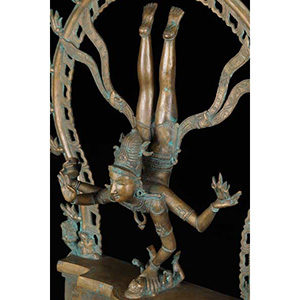
Establishment of the Vedic Darma and Contemporary Indian Society, Culture and Cosmos volume 7, No 2, June 1992.
‘What was it that had to be undermined (in the Sanatana Dharma) for the fast and furious decline to set in? It was precisely that point, that Skambha. Science, as separate from the spiritual arose and gained supremacy in India after that Point had been effectively eliminated or hidden under impenetrable veils. Hence we have the later myth of Guha, the veiled hidden One, the Puranic counterpart of Agni and Skambha. What I mean to demonstrate by establishing these simple connections is how that original high perception came to be transferred to the myth and thus PRESERVED in the collective consciousness during the full period of the decline, conquest and subjugation of the race…’.
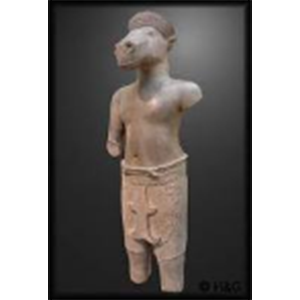
Cosmic Harmonies in Hindu Civilisation, The Vishaal Newsletter, volume 5, No 6, February 1991.
‘The Line (of evolutionary avatars) consists of ten… Although they are a string of births stretched over many millennia, it is one process with one finality: the establishment of the reign of Truth, or the Golden Age. In Hinduism it is known as the Satya Yuga. Each Avatar has added a portion to the mosaic. Sri Aurobindo has carefully explained this in his writings on the Ten Avatars… (He states) that Kalki would come “to correct the error of the Buddha”.’

2 Comments
As usual when reading about Thea and her work, one is overwhelmed by the profundity of her knowledge and the wisdom inherent in what she proposes as the ‘new way’ or a ‘third way’. Neither science nor religion satisfies the deeply felt need today for finding a way forward in our troubled times. As in the past, the ‘new way’ needs to concentrate on this earth and the integration of the forces of dark and light. Given its civilization that dates back to pre-historic times and its repository of wisdom, for instance as transcribed by a collectivity of ‘illuminated beings’ in the Rig Veda, India will play a central role. For one thing, it needs to find the solution for unity in diversity and show the way to harmonize disparate parts. There is significantly more to this section than what I have alluded to here, but these notes should give a suggestive indication of the high value of studying this material for understanding what’s at stake for both the individual and the world, and to discover a sound way to travel toward the future.
The main point of distinction between the doctrine of Mani and the Western branch of Gnosticism (Basilides, Valentinus, etc.), is that in Manichaeism the cosmology is subservient to the soteriology (Rudolph, p. 336). This means, essentially, that Mani began with a fundamental belief about the nature of humanity and its place in the cosmos, and concocted a myth to explain the situation of humankind, and the dynamics of humanity s eventual salvation. The details of the cosmology were apparently not important, their sole purpose being to illustrate, poetically, the dangers facing the souls dwelling in this realm of darkness as well as the manner of their redemption from this place. The Manichaean cosmology began with two opposed first principles, as in Zoroastrianism: the God of Light, and the Ruler of Darkness. This Darkness, being of a chaotic nature, assails the Kingdom of Light in an attempt to overthrow or perhaps assimilate it. The King of the Paradise of Light, then, goes on the defensive, as it were, and brings forth Wisdom, who in her turn gives birth to the Primal Man, also called Ohrmazd (or Ahura-Mazda). This Primal Man possesses a pentadic soul, consisting of fire, water, wind, light, and ether. Armored with this soul, the Primal Man descends into the Realm of Darkness to battle with its Ruler. Surprisingly, the Primal Man is defeated, and his soul scattered throughout the Realm of Darkness. However, the Manichaeans understood this as a plan on the part of the Ruler of Light to sow the seeds of resistance within the Darkness, making possible the eventual overthrow of the chaotic realm. To this end, a second Living Spirit is brought forth, who was also called Mithra. This being, and his partner, Light-Adamas, set in motion the history of salvation by putting forth the call within the realm of darkness, which recalls the scattered particles of light (from the vanquished soul of Ohrmazd). These scattered particles answer Mithra, and the result is the formation of the heavens and earth, the stars and planets, and finally, the establishment of the twelve signs of the zodiac and the ordered revolution of the cosmic sphere, through which, by a gradual process, the scattered particles of light will eventually be returned to the Realm of Light. The Manichaeans believed that these particles ascend to the moon, and that when the moon is full, it empties these particles into the sun, from whence they ascend to the new Aeon, also identified with Mithra, the Living Spirit (Rudolph, pp. 336-337). This process will continue throughout the ages of the world, until all the particles eventually reach their proper home and the salvation of the godhead is complete.